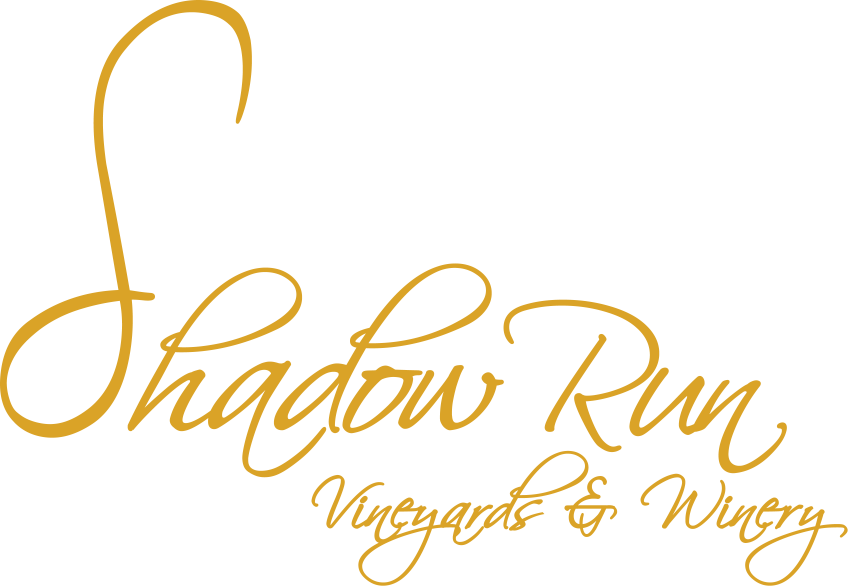“Delicate floral tones, flavors of ripe apricots, Asian pear, honey and a hint of peaches in fresh cream…”
This description is an excerpt from the tasting notes for our 2012 Melissa, a white wine blend of Viognier and Grenache Blanc. The tasting notes for our wines often prompt the questions, “How do you distinguish (learn to recognize) the flavors and aromas in the wine?” “How do those flavors end up in the wine?” and “Who writes this stuff?” The last question is the easiest; as the winemaker for our family, I write our tasting notes, although I often add to those notes based on comments I hear in the tasting room (“You are getting cloves? I missed that!”).
Distinguishing the various flavors and aromas in wine is a learned game. One of my favorite professors at graduate school taught me that one of the best (certainly the most enjoyable) way to enhance your palate is to buy and enjoy fresh fruit in season and make a memory about the flavors of the fruit. Take the time to savor the flavor and aromas of raspberries, ripe apricots, honeydew melon, blackberries and plums. Learn to distinguish between white peaches and yellow peaches. Take a few precious seconds to smell that slightly bitter orange peel as you are pulling apart the fruit.
This game of sensory perception can be played alone, but I believe that the aromas and flavors that others find in the wine enhance my recognition and enjoyment of the wine. We each bring our own background knowledge of flavors and aromas to the game. My Cellar Rat loves lychee nut based on time spent in Hawaii and has experienced that tropical fruit taste in a certain viognier. A winemaker friend shared that his grandmother made luscious blackberry pies and he can always distinguish blackberry. The slightly sweet, slightly orange, very aromatic Meyer lemon is grown in many California backyards and can be distinguished from the common lemon – if you take a moment to think about it. Add the aroma of certain flowers like honeysuckle or violet to your sensory data bank and the game just became more satisfying.
The next step in the game is to learn the flavors and aromas that are characteristic of your favorite varietal and look for them as you taste the wine. Grenache typically includes flavors of red cherries, the best Viognier will include stone fruit flavors of peach and apricot and aromas of honeysuckle. I can always find blueberries and violet in our Petite Sirah and often taste blackberry or even plum in our Syrah. Your favorite Sauvignon Blanc is probably defined by light citrus flavors and your least favorite Cabernet Sauvignon may have a hint of veggie aromas including bell pepper or (heaven forbid) asparagus. And we haven’t yet talked about other flavors or aromas we might find in wine like tobacco, leather, graphite, chocolate, vanilla, coconut, black pepper, butter, black licorice or horse blanket.
Where do these flavors and scents come from? The fruit, vegetable and flower smells and flavors are formed from compounds in the maturing grapes. As the grapes ripen, and most importantly, are exposed to adequate sunlight, certain flavor compounds become more distinct and others fade. So for example, the compound methoxypyrazine is the culprit that produces the veggie flavors and aromas in that Cabernet that you just poured for your brother (who will drink anything). But with adequate light on the grape cluster, that compound diminishes, and the prized flavors of black currant, black cherry and blackberry evolve. Can you taste a hint of black pepper in your Syrah? That is a dead giveaway that the grapes were grown in a cool climate. With more sunlight and heat, the black pepper fades and the flavors of boysenberry, blueberry, and black berry become more pronounced. Again, sunlight on the grape cluster is critical to flavor development. If we harvest our Viognier grapes before the fruit has completely ripened, or grow it in the shade of an overly vigorous vine canopy, we will produce a wine that tastes very much like your favorite Sauvignon Blanc: citrusy and lean. When we allow the same grape varietal to fully ripen in a sunlit canopy, we enjoy the “classic” Viognier flavors of apricot and peaches.
Other flavors and aromas that you find in your wine are produced by the tannins and sugars in the oak barrel. Depending on the source of the oak and the charring of the wood, the wine may take on flavors of vanilla, coconut, chocolate, or tobacco. The butter flavor in that 1990s chardonnay that you once prized was produced from a compound called diacetyl, produced during malolactic fermentation when the wine’s tart malic acid is converted to the softer lactic acid. And the lovely aroma of horse blanket is derived from the brettanomyces yeast – a little bit of that rascal goes a long way.
Certainly there are brilliant educators and wine professionals offering seminars to guide you through the sensory evaluation of wine. But it is summer and I would rather pull an apricot from our tree and eat it right there, not mindlessly, but thinking of the specific sweet flavor. And this is the best time to stroll through our local farmer’s market, inhale the luscious aromas of the fresh fruit, and then make a memory of the different smells. Or visit a specialty market and treat yourself to fresh coconut, fresh pineapple, dragon fruit. If I am sipping a wine with my favorite Cellar Rat, and just can’t identify a certain spicy scent, I jump up, head to our spice cabinet and inhale the various spices…hmmmm, cloves. I have also been found sniffing #2 pencil lead – ahhhh yes, it is indeed graphite that I am detecting in the wine! And this is all just for fun, right? So, bury your nose in those violets and enjoy!

